In last week’s post, we introduced you to this past summer’s Juniata College Field School at Fort Halifax Park in Halifax, Dauphin County. This week, we’ll tell you about the “major discovery” we hinted at last week!
The fifty-three test units, the trench, and the metal detecting survey produced thousands of artifacts, some of them Pre-Contact Native American, and some of them Colonial.
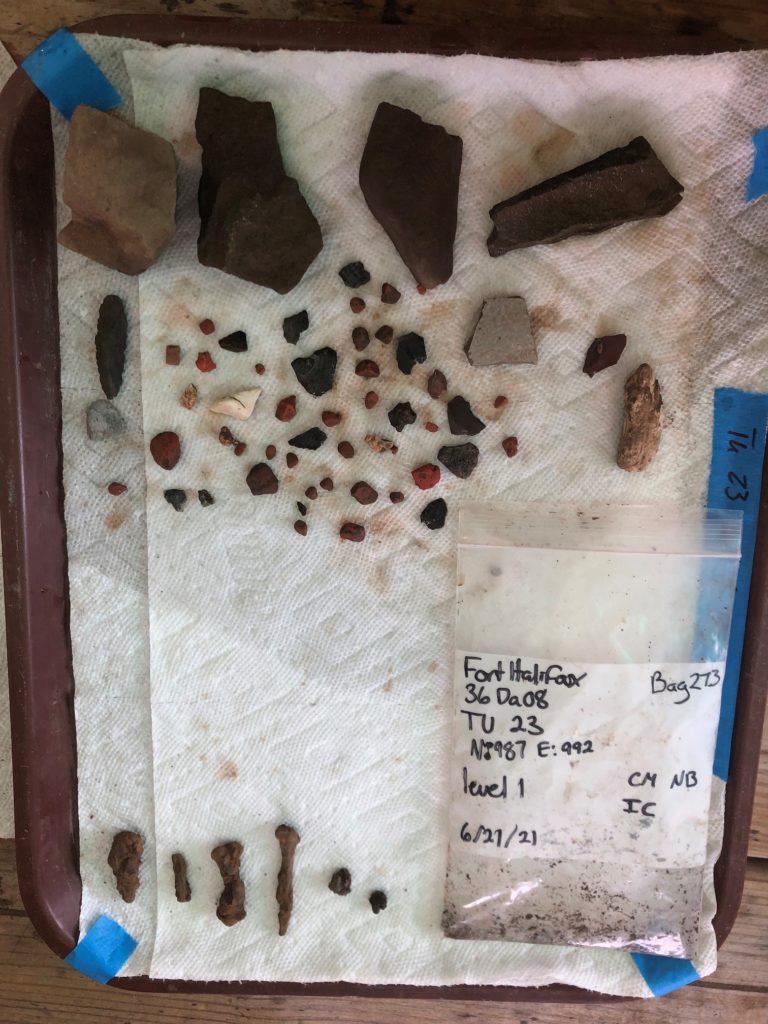
Finding Artifacts
The Pre-Contact objects included many flakes, projectile points and other stone tools, fire-cracked rock, and Native American pottery. We found large numbers of Colonial wrought nails, lead balls, hand wrought spikes, chalk, coins, and various kinds of Euro-American pottery including creamware, redware, and British made Blue Staffordshire.
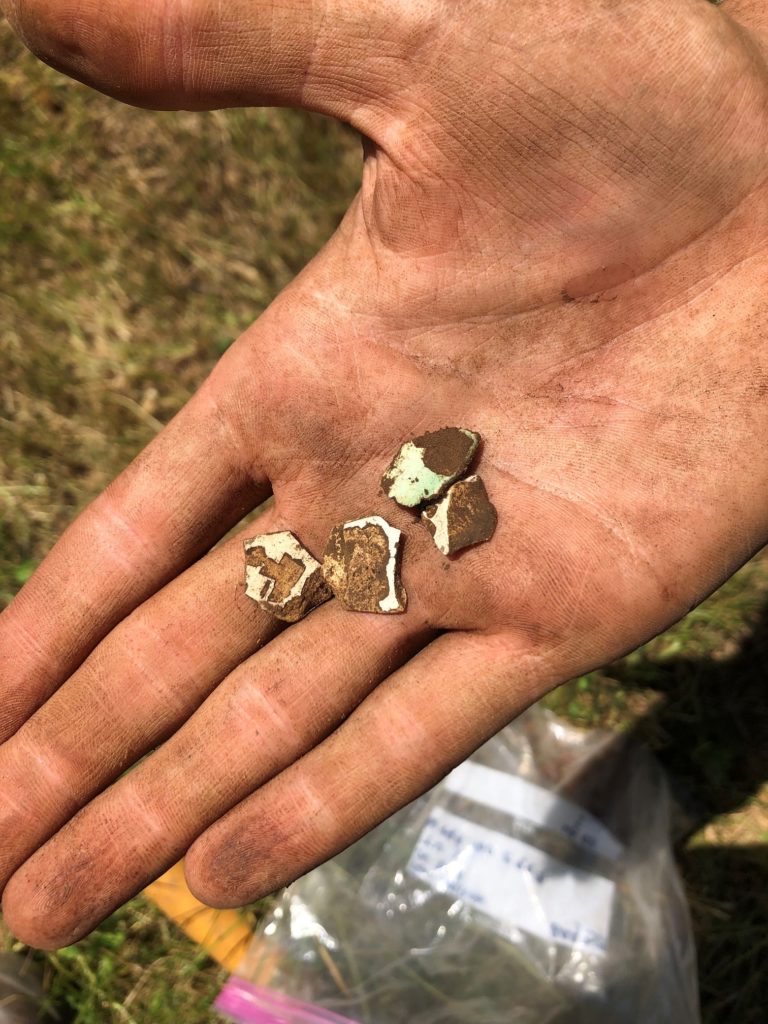
Some of the more unique Colonial artifacts included a belt buckle, a French coin dated 1655 (in circulation for a century before the fort was built), gun flints, a gunlock primer pan and a frizzen. More modern objects were also found, such as a mid 20th century women’s watch, a 19th century metal button, window glass, wire and machine-cut nails, and pieces of asphalt shingles.
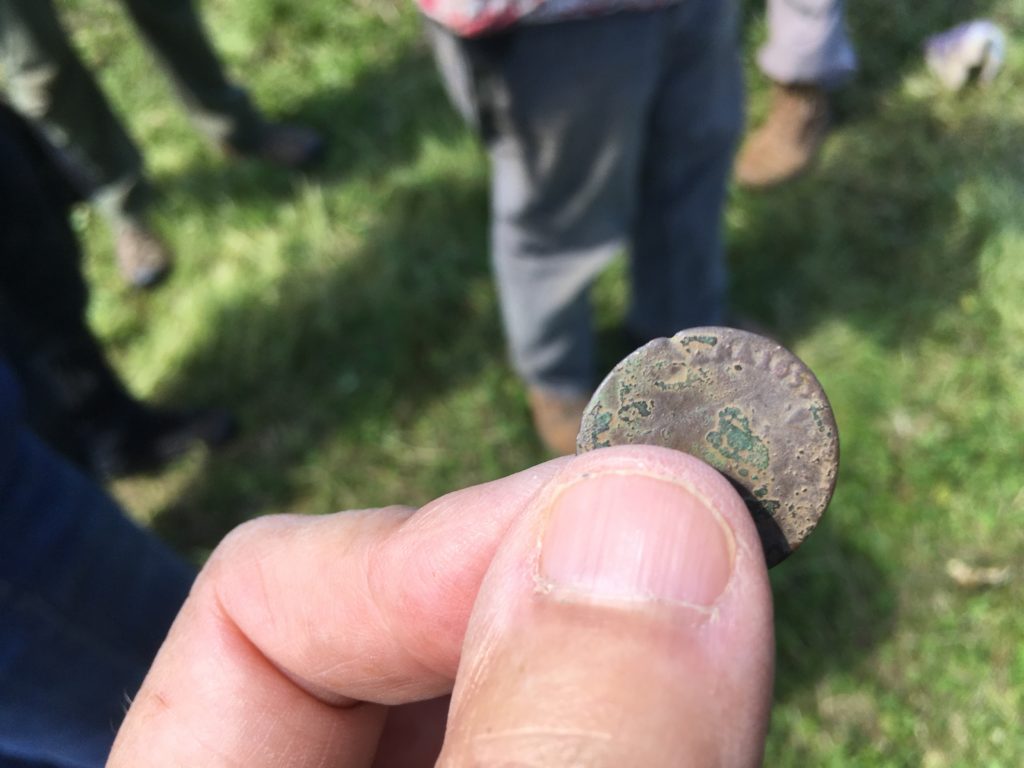
Finding Features
The excavations also found features. We found multiple Native American hearths. A possible Colonial era trash deposit or midden produced a pig bone and tooth. More notably, we found red brick and charcoal flecking throughout multiple test units and heavily compacted soil that appeared to be a preserved portion of the Colonial-era landscape that somehow escaped being plowed.
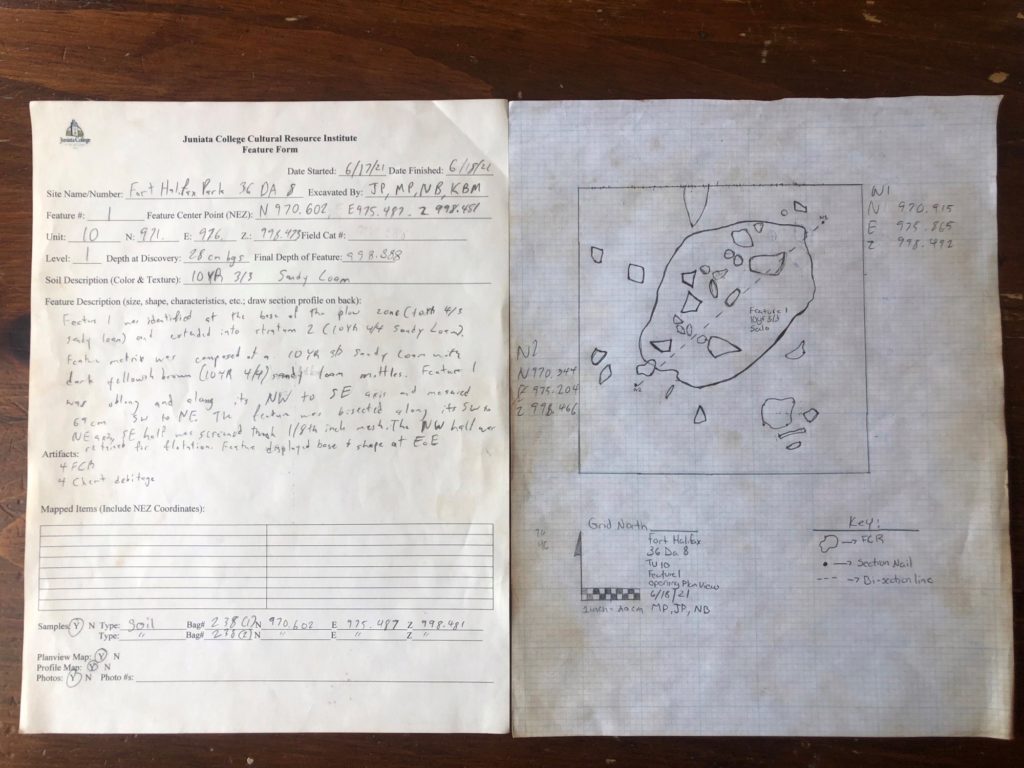
Below this preserved surface, we found some darker colored features that stretched across test units mostly in the Southeast portion of the field. Initially, to us amateurs, the first one of these soil stains we saw appeared to be very distinctive in shape and looked to us very much like a dinosaur-shaped chicken nugget!
These dark features overlapped each other within the same test units. After they were dug out, we discovered that they were linear in shape and may have been compacted soil from the log wall of the fort or a fort building resting on the soil. We also found a small portion of what looked like the corner of a small stone foundation in the same area.
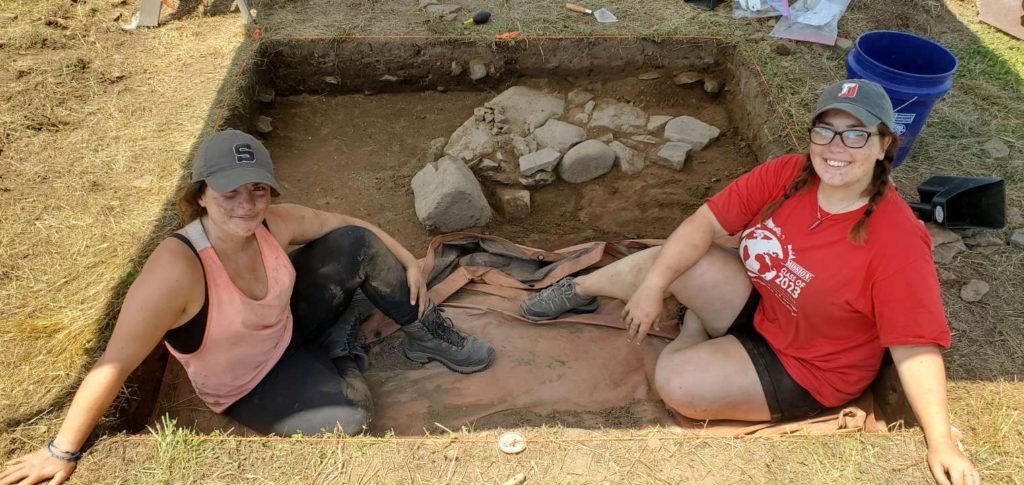
During the afternoon of our last day of excavation, a very large, very dark stain was found that was certainly part of a structure or the defensive walls of the fort! Unfortunately it was found too late to finish excavating it, but we probed the stain with a soil auger and found that it continued for 30 centimeters past excavation. Further excavations on the site will probably focus on these features to reveal more of the fort’s structure.
What we learned
We learned a lot during our field school.
We had a lot of fun screening for artifacts, at first checking constantly with our teaching assistant and volunteers for verification, but eventually learning how to identify things like flakes, fire-cracked rocks, pottery and various other items. Additionally, we spent time cleaning and cataloging artifacts which gave us more experience seeing the many types of objects found at the site.
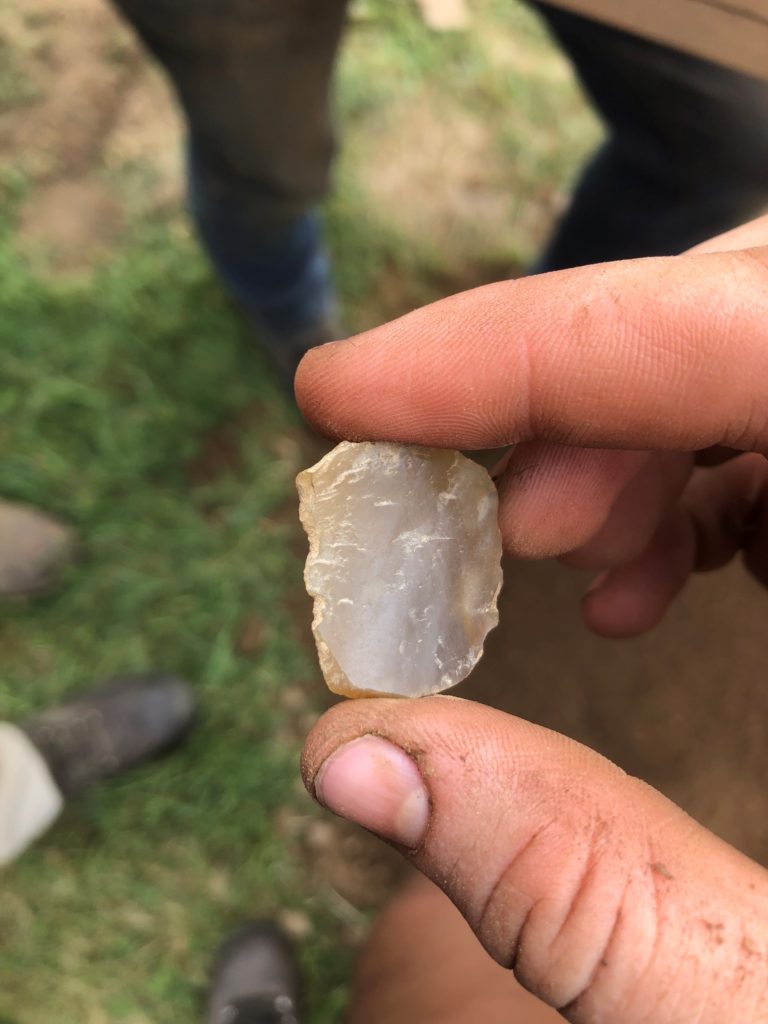
We learned some pretty cool tricks for identifying some kinds of artifacts. For both of us, our favorite was discovering that you can identify animal bone and some kinds of earthenware by touching it to the tip of your tongue!
Finding both Pre-Contact and Colonial artifacts confirmed the presence of both generations of Native people and of Colonial militia and settlers in the area, and many of the colonial artifacts (lead balls, gun parts, English ceramics) were consistent with the historical record of the fort.
We also learned a lot about coming together as a team to work towards a common goal, which at times was difficult. We had some very hot days in the field, and there were students from five or six different universities and from many places, so we had to learn how to work with people we had never met under difficult conditions.
Professionally, we learned about career outlook and the world of Cultural Resource Management (CRM) archaeology, and we had the chance to begin building our professional networks by talking with professional archaeologists visiting and volunteering at the site, with Dr. Burns, and with Sonya Williams our teaching assistant.

The best part of this whole experience was being able to say we were a part of finding the fort, even if it was on our last day. Finding the fort was an essential goal in the preservation of Fort Halifax Park for the future, and we were happy to have a hand in achieving it. We both thoroughly enjoyed the experience and intend to incorporate archaeology into our future careers.
While flakes became mundane for us at times, we were still consistently excited about all the artifacts found (and even sometimes rocks that weren’t exactly archaeologically significant but did look cool!) Both of us being Pennsylvania natives, it was especially rewarding to be a part of discovering Pennsylvania history. Before our field school, we both had driven by the exit for Halifax on Route 322 many times on our way to Philadelphia, Harrisburg or New Jersey. Now when we see that exit, it will be a lot more meaningful to us – and we may have to stop for a visit.
This week’s post is by Guest Contributors are Maria Pauline and Sarah Paterno, students from Penn State University who participated in this past summer’s Juniata College Field School at Fort Halifax.
Editor’s Note:
If you are interested in learning more about archaeology in Pennsylvania, the State Museum of Pennsylvania will hold its annual Workshops in Archaeology virtually on Saturday, October 30. Titled Hidden Stories: Uncovering African American History Through Archaeology and Community Engagement, this year’s workshops will feature an overview of several African American archaeological investigations and community archaeology projects in Pennsylvania and the Mid-Atlantic.
For more information on specific sessions or to register for the virtual conference, visit http://statemuseumpa.org/WorkshopsinArchaeology/.
Comment Policy
PHMC welcomes and encourages topic-related comments on this blog. PHMC reserves the right to remove comments that in PHMC’s discretion do not follow participation guidelines.
Commenters and Comments shall be related to the blog post topic and respectful of others who use this site.
Commenters and Comments shall not: use language that is offensive, inflammatory or provocative (this includes, but is not limited to, using profanity, obscene, or vulgar comments); disparage other commenters or people; condone illegal activity; identify the location of known or suspected archeological sites; post personal information in comments such as addresses, phone numbers, e-mail addresses or other contact details, which may relate to you or other individuals; impersonate or falsely claim to represent a person or an organization; make any commercial endorsement or promotion of any product, service or publication.
If you would like to comment on other topics not related to this blog post but related to PHMC, please fill out the PHMC Contact Us Form.
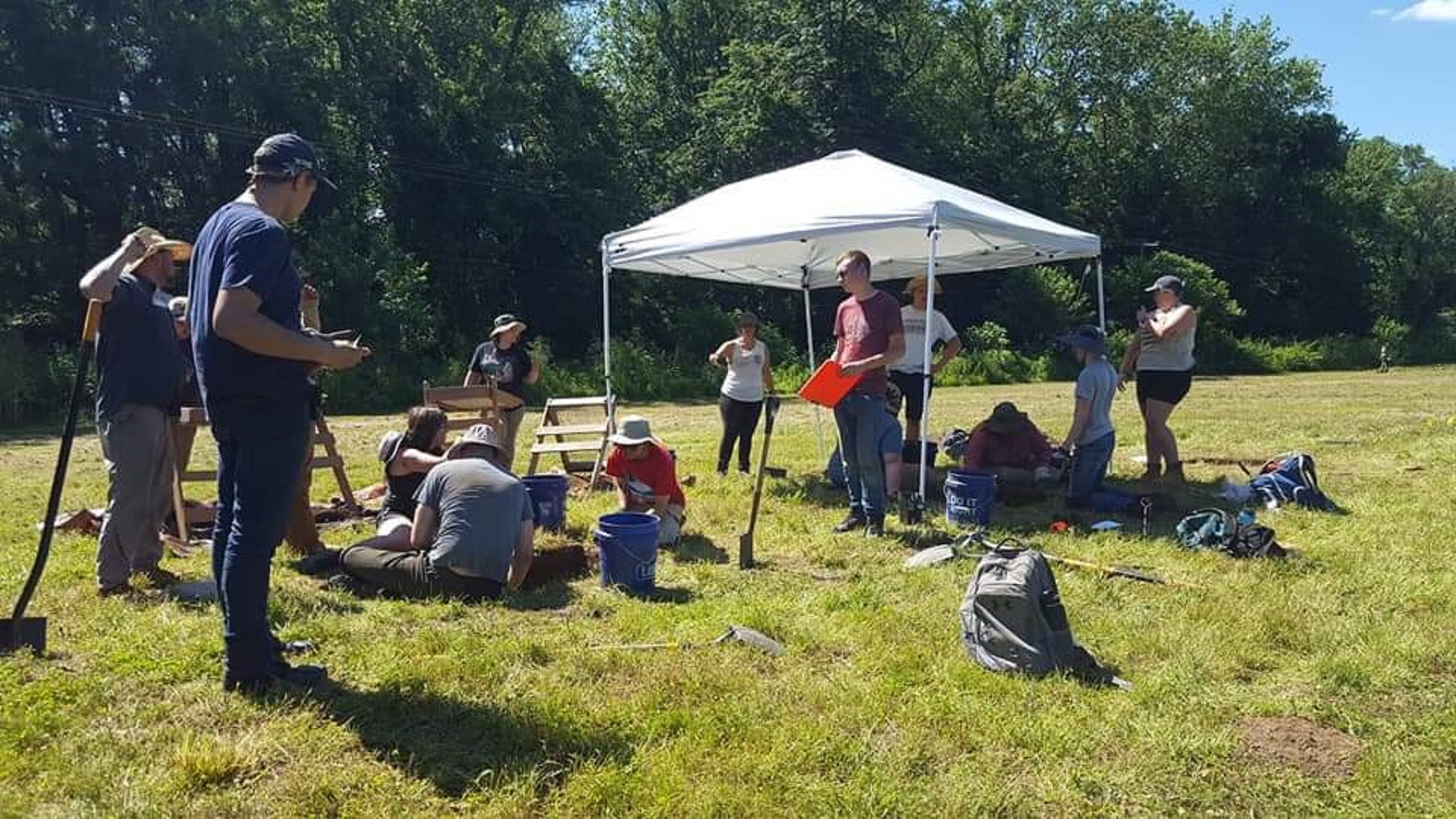
Leave a Reply